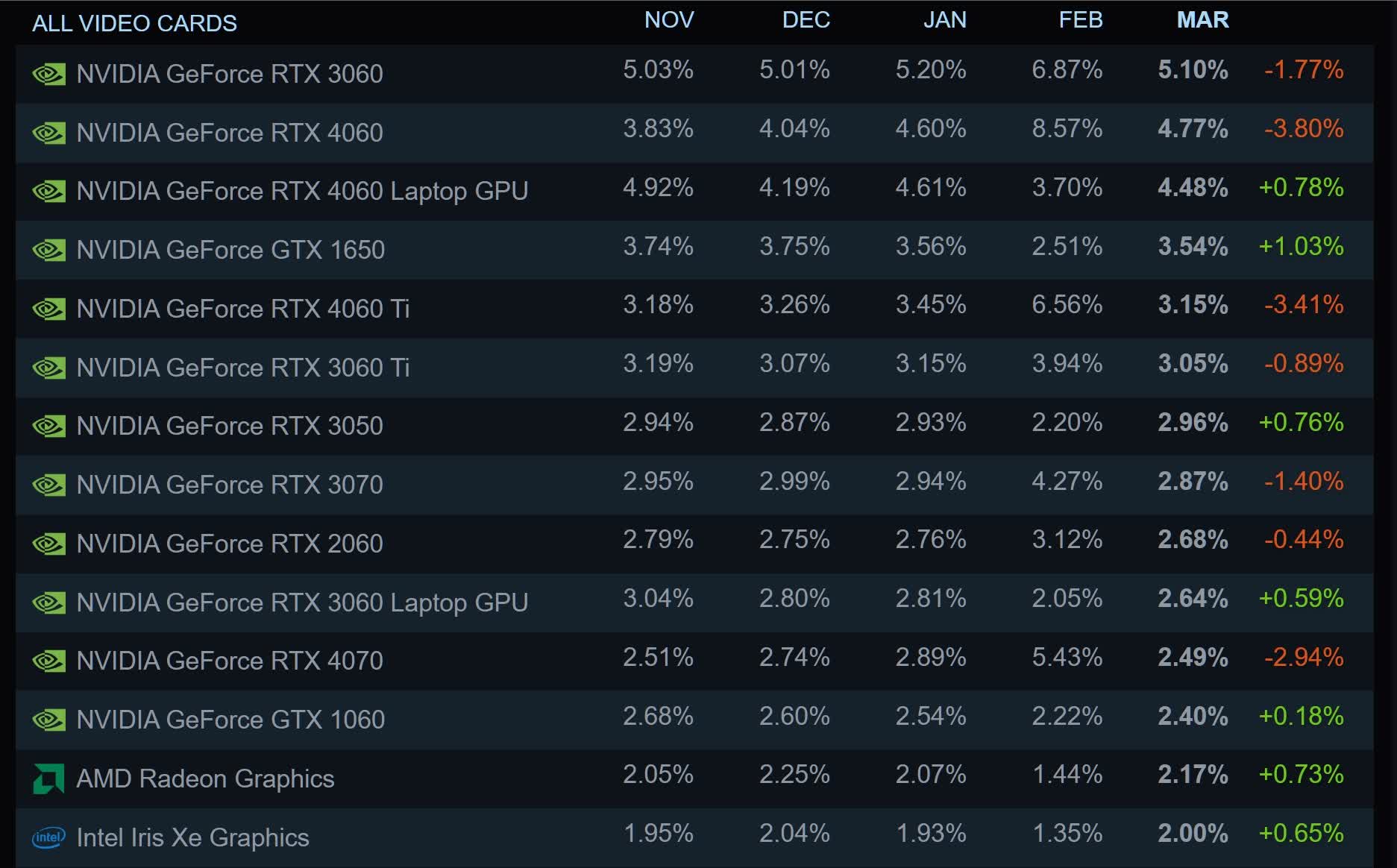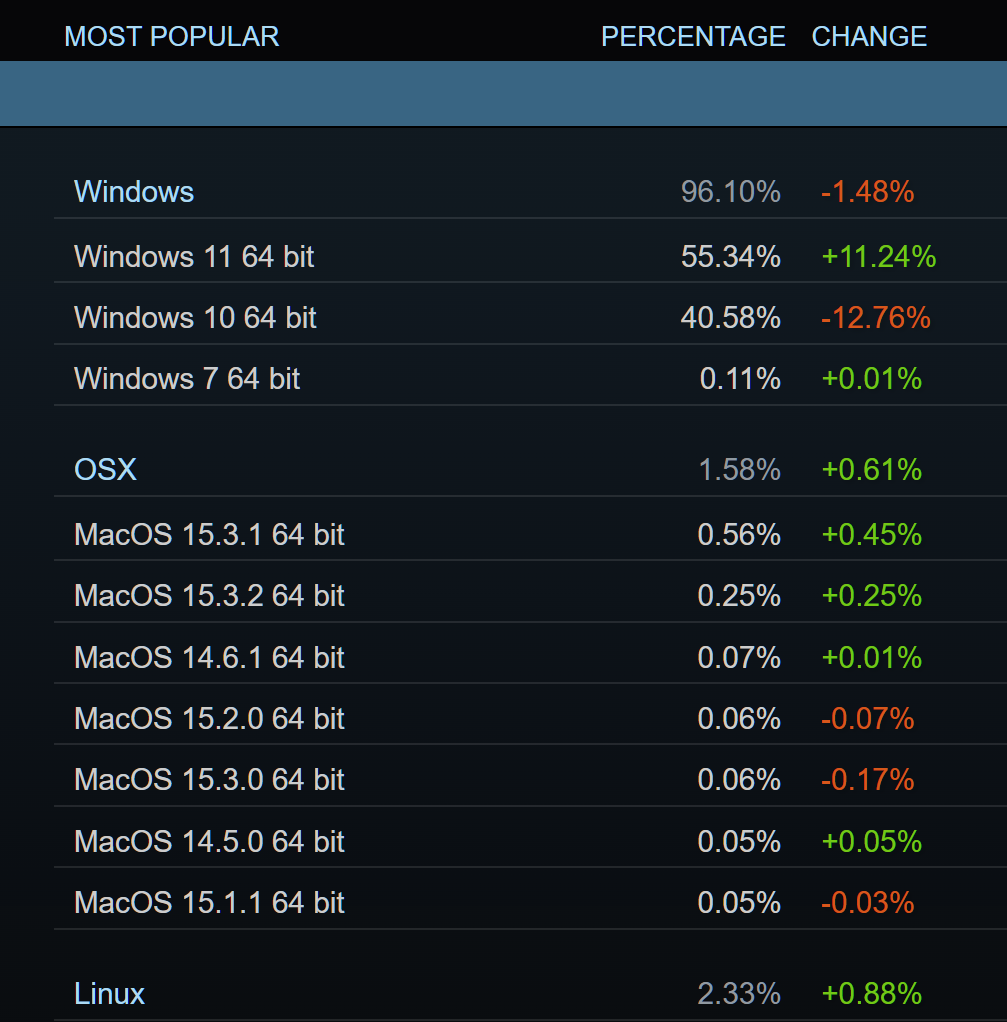In brief: Valve has just posted the results of March's Steam survey, and, as predicted, things have returned to normal after the weirdness we saw during the previous month. This means there's a new top GPU, operating system, and language, while AMD's CPU share has reached a record high.

February was one of those months where the Steam survey changed drastically. One of the biggest changes was a new most-popular graphics card, as the RTX 4060 replaced the RTX 3060.
These sorts of anomalies can occur for several reasons, including sampling bias, reporting bugs, and hardware driver updates. There's also the problem of shared machines at internet cafes in China inflating hardware specs.
But the issue is often down to Valve's algorithms and data processing methods, which can directly impact the survey results, especially when they make back-end changes or adjust how they categorize, interpret, or weight the incoming data.
But, as we saw after the last survey shake-up in October 2023, the status quo has now been restored. That includes the RTX 3060 taking back its crown from the RTX 4060, though the Ampere card is only 0.34% ahead of its Lovelace successor in terms of user share.
Most popular GPUs among Steam survey participants in March 2025
March also saw AMD get back to business in the CPU section. Team Red hit a record 36.19% user share in January before falling 5% as Intel rose by the same amount a month later. In March, AMD reached a new record high of 37.62%, up 6.5%, with Intel dropping by the same margin to 62.3%.
Windows 10 also saw an unlikely resurgence in February, retaking the top spot with a 10% rise in user share. The older OS is now down to 40% and Windows 11 is found on 55% of participants' machines.
This is a trend we're seeing globally as Windows 10's October 2025 end-of-support date draws closer. Statcounter reports that while the OS remains the most popular on desktops, its share has declined since the start of the year as Windows 11 climbs rapidly. There is now just 10 percent points separating the two operating systems.
Returning to the Steam survey, 16GB has replaced 32GB as the most common amount of system RAM among participants, and English took over from Chinese as the most popular language.
AMD hits record CPU share as new top GPU and OS emerge on Steam survey


